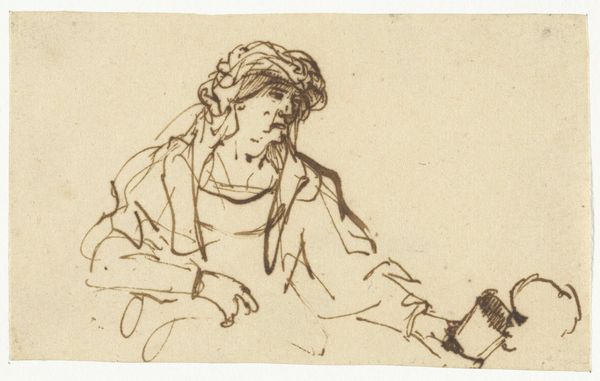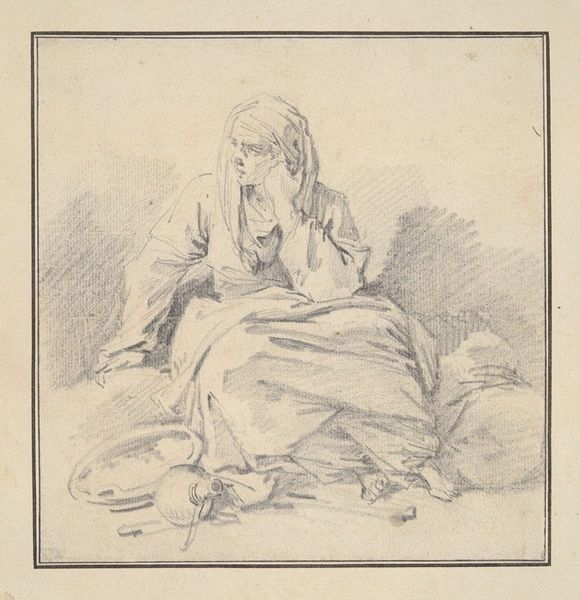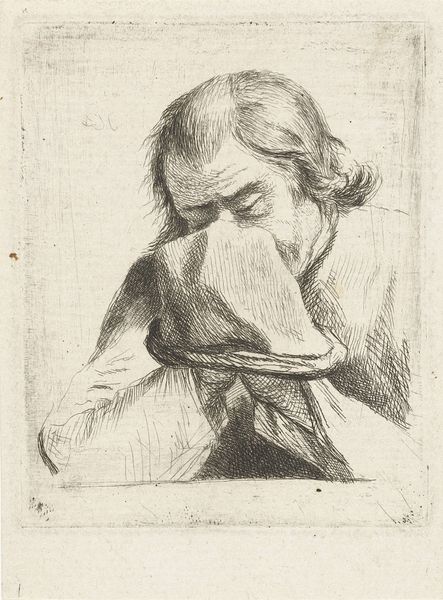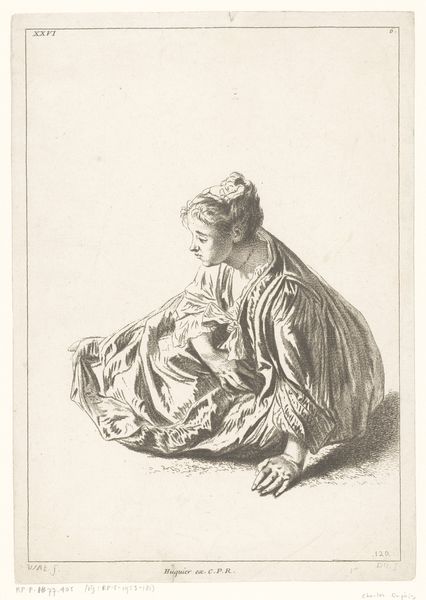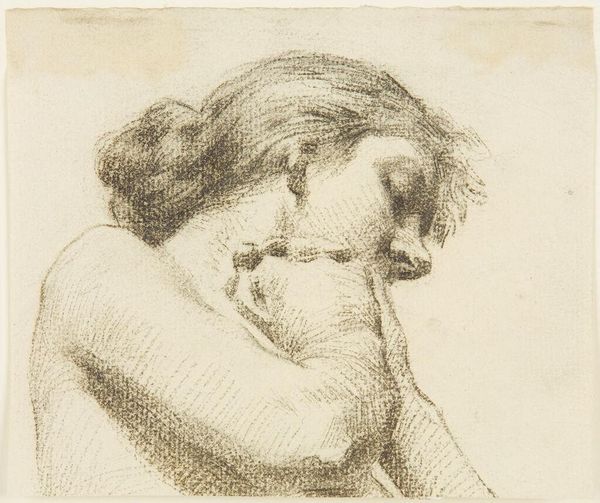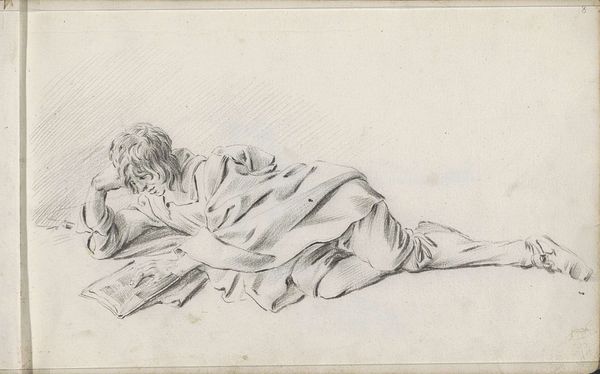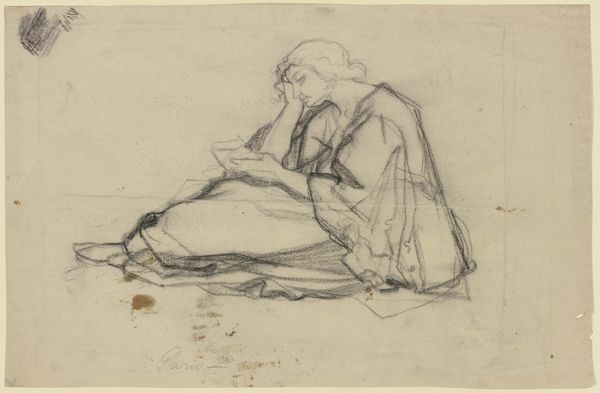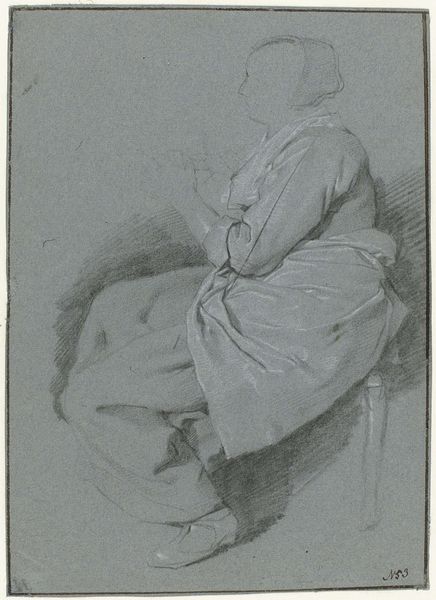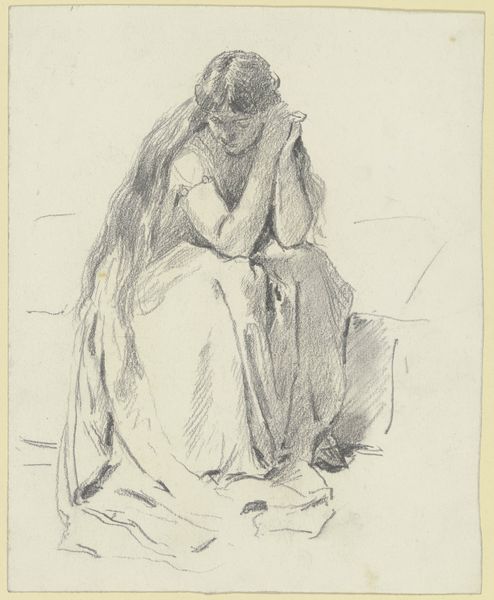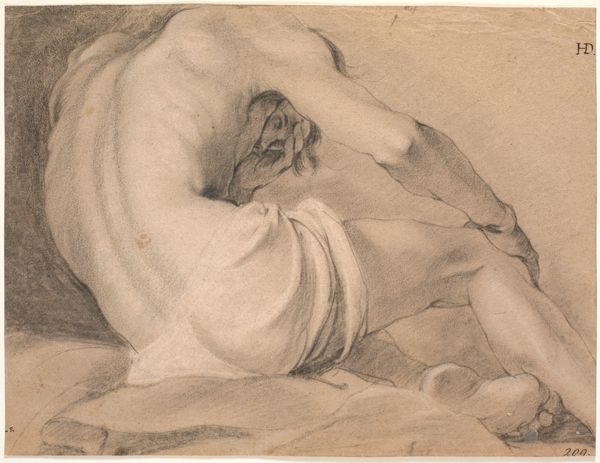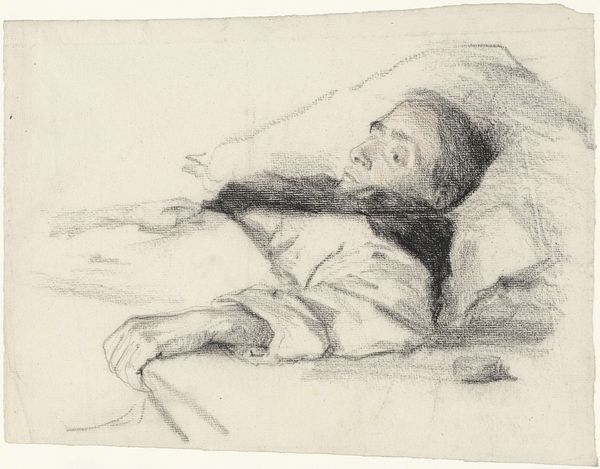
drawing, ink
#
portrait
#
drawing
#
dutch-golden-age
#
ink
#
portrait drawing
#
genre-painting
Dimensions: height 198 mm, width 307 mm
Copyright: Rijks Museum: Open Domain
Editor: This is "Reclining Youth," a drawing in ink made by Gerbrand van den Eeckhout, sometime between 1653 and 1657. The way the ink is so fluid makes it look as though this youth just drifted off to sleep. What catches your eye? Curator: Initially, one notes the tonal gradations, the deliberate contrasts Eeckhout orchestrates between light and shadow. Consider the youth's hat, how the darkness there throws his face into higher relief, almost spotlit against the plain ground. The composition leads the eye along a definite, careful course. Editor: Yes, his face really does stand out. Is that contrast the only technique he’s using to focus us? Curator: Observe how the lines delineate not merely the *form* of the youth, but contribute to an appreciation of texture. The rendering of his clothes differs greatly from the almost cloud-like softness of the cushion, directing us to contemplate their differing materialities. Note the deliberate use of blank space around the subject, too, drawing a formal boundary. Editor: That makes a lot of sense. I was so focused on the subject that I missed how important the space around him is. Curator: The negative space isolates and emphasizes the form, transforming the everyday act of resting into something monumental and demanding our attention. In what way might we read that interplay? Editor: I hadn't thought of it that way. I appreciate how focusing on composition and technique reveals aspects that I would have missed otherwise. Curator: Precisely! By closely examining Eeckhout's formal choices, the relationships of shape, tone and material become an active discourse. A discourse about stillness and form, not simply youthful rest.
Comments
rijksmuseum over 2 years ago
⋮
Van den Eeckhout was a pupil of Rembrandt from 1635 to 1641. He continued drawing in his master’s style for a long time. He also made a fascinating group of figure studies in brush and wash, the finest of which is this loosely portrayed youth. Such freely drawn studies were undoubtedly the kind of work he preferred making, for at the time, artists likened working for publishers to slave labour.
Join the conversation
Join millions of artists and users on Artera today and experience the ultimate creative platform.


